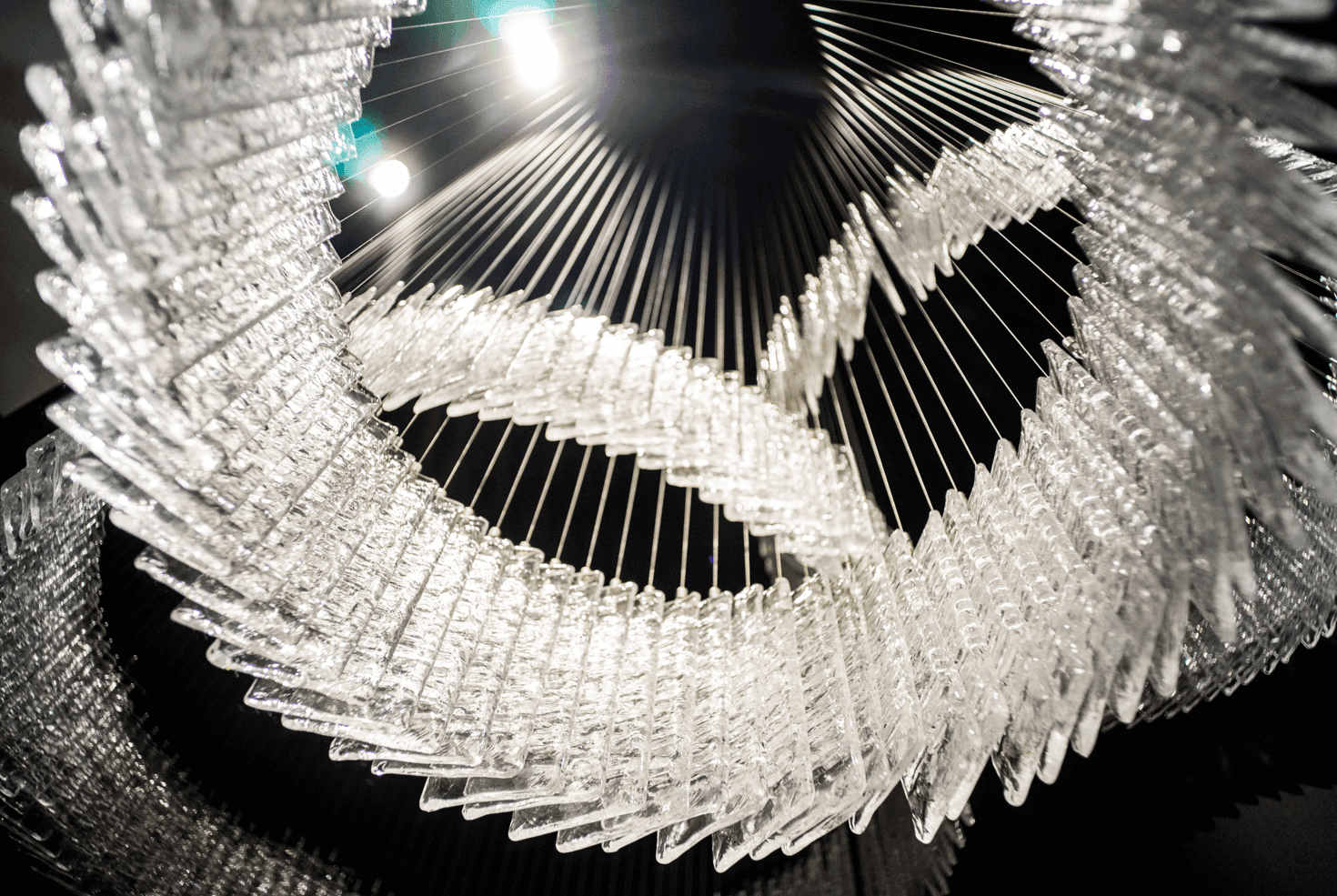What inspired the design of the Aster table series for Roche Bobois, and how does it pay tribute to Oscar Niemeyer’s Brasilia Cathedral?
What was interesting about designing the Aster table was finding the balance between the structure of the table and the lines of the legs. Each line becomes part of that structure and contributes to holding the clear glass top. It also contributes to the visual aesthetic of the table itself.
I always find that successful design is when one thing is many things at the same time. And here, the added element — beyond the sculptural table legs, the structure, and the assembly of lines and wood supporting the glass — is the ‘visual image,’ which subtly references a cathedral, where concrete columns converge to create a central space.
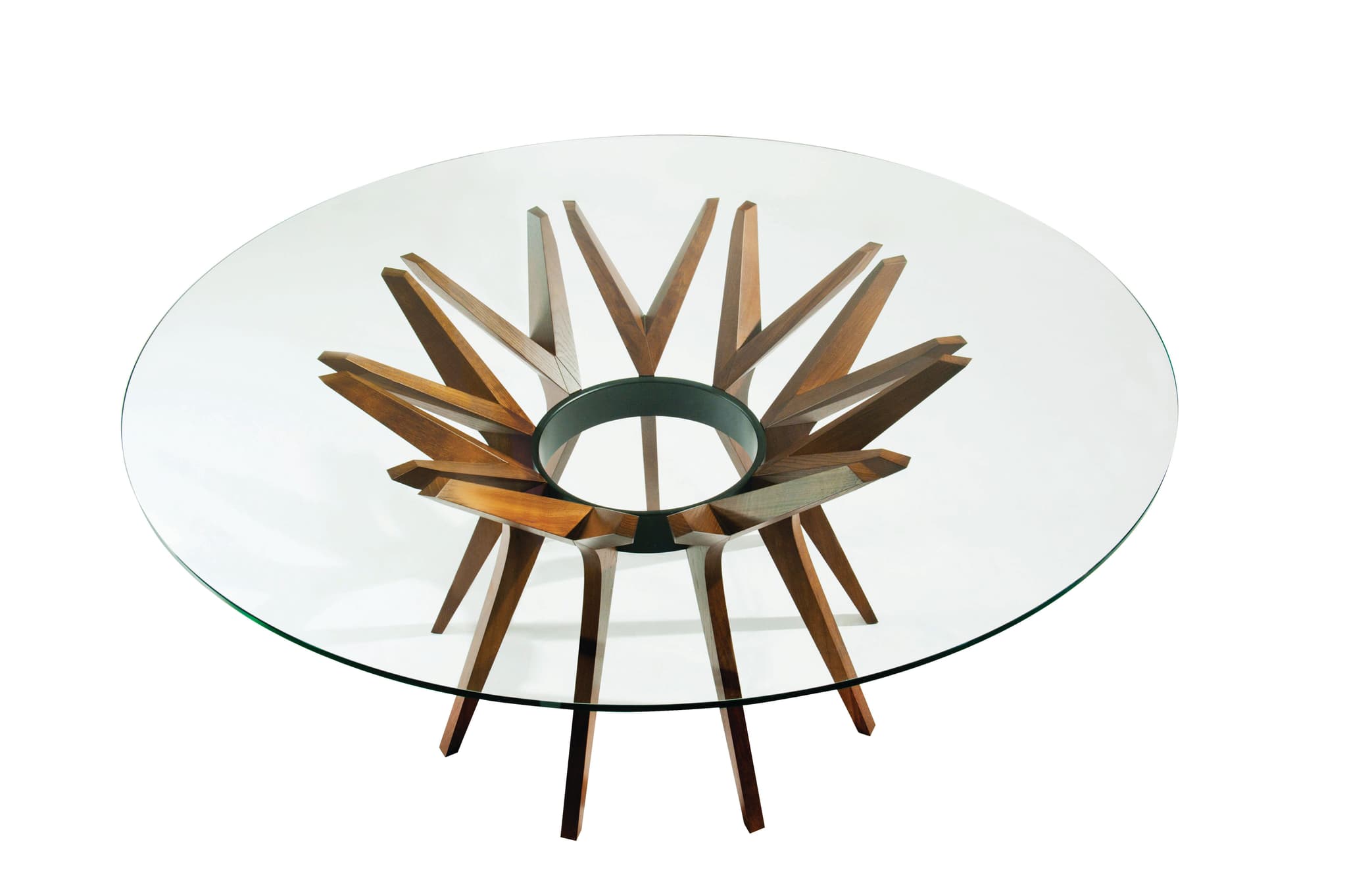
Can you share more about your work with Veronese, particularly the challenges and triumphs of creating the “Ceci n’est pas un vase” and the “Ice” series of lights?
Working for Veronese was a different kind of challenge. One has to learn about the material: Murano glass. As a designer, I always look at the capabilities of the materials I use: what can they do, what are their qualities? How can I use them to enhance these qualities? Is there a different approach to them?
With the ‘This is not a vase’ series, it was fascinating to push the boundaries: three layers of coloured glass create an outside perception of the object and then reveal the inside. This subtle play is further strengthened by opening cut-out holes or voids that give you a vision of what is within the vase. The opposite of a vase which usually exists to hold something else. Here, there is nothing other than the vase.
The Ice collection takes a different approach, a minimal approach to glass as a ‘light catcher.’ If you shine a light on a piece of glass, it shines through, and any inclusion or asperity within the glass will ‘hold’ the light. So, I created a pattern to be moulded on the glass piece, so that it becomes a ‘light trap.
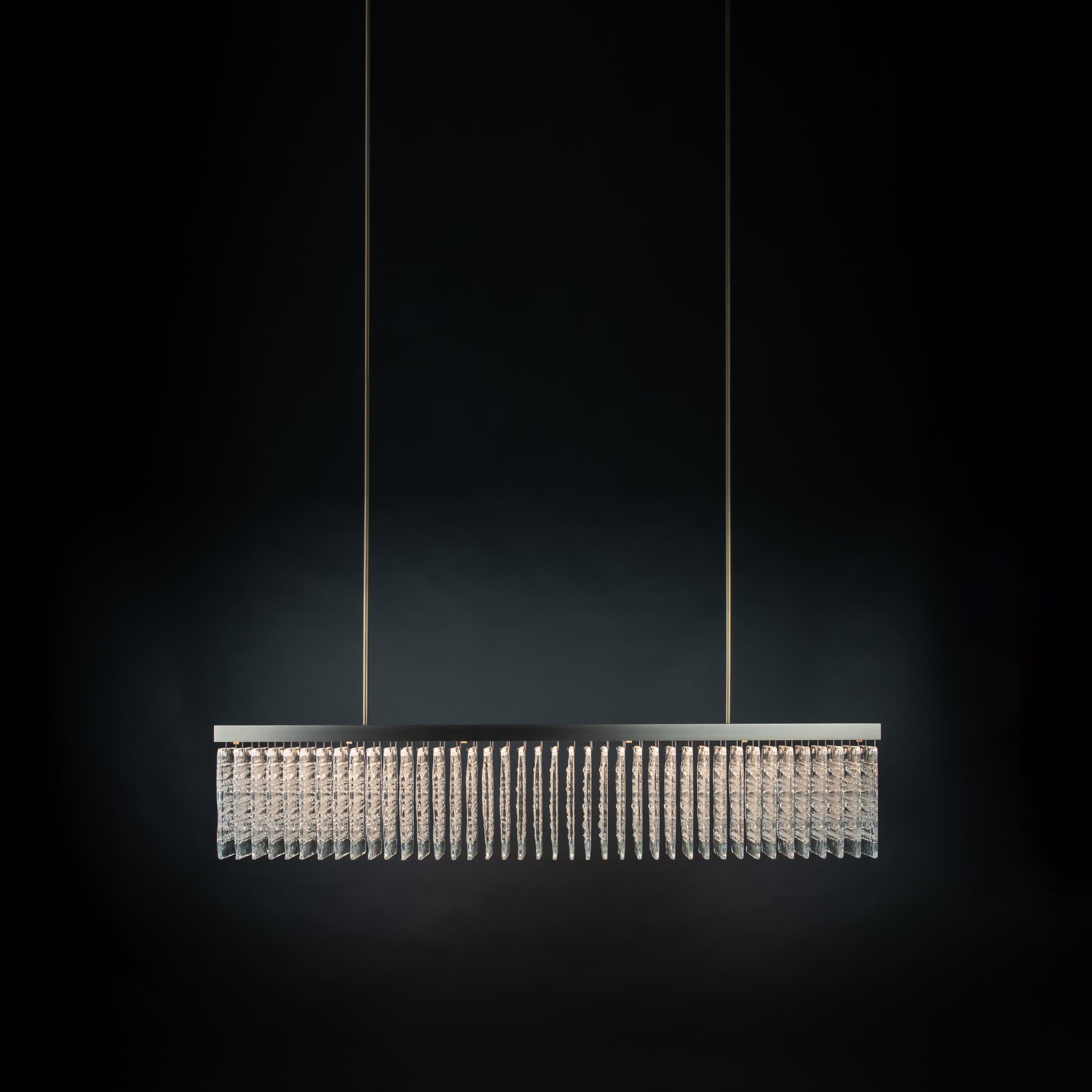
What inspired the use of cloisonné enamel for the LALA Cabinet, and how did you adapt this ancestral art to modern geometric design?
Again, in this case, the material leads me to the design. The cloisonné technique — which is ancestral — is very beautiful and elegant. It gives a unique depth to the surface. By assembling it into a large unit — a dresser in this case — I change the scale of use and the perception of the object. What is usually reserved for small, delicate objects like vases or boxes is now applied to a 2.8m-long unit with moving parts.

How do you incorporate the texture and feel of materials like bamboo cane, hammered bronze, and straw marquetry into your designs to enhance their sensory appeal?
For me, designing is about finding a line, an idea that is expressed very clearly with minimal effect. Then, I need to incorporate layers of perception, so the proportions, the material, texture, how light shines on it, and how it feels to the touch become my language. This is a very good example of how I work.
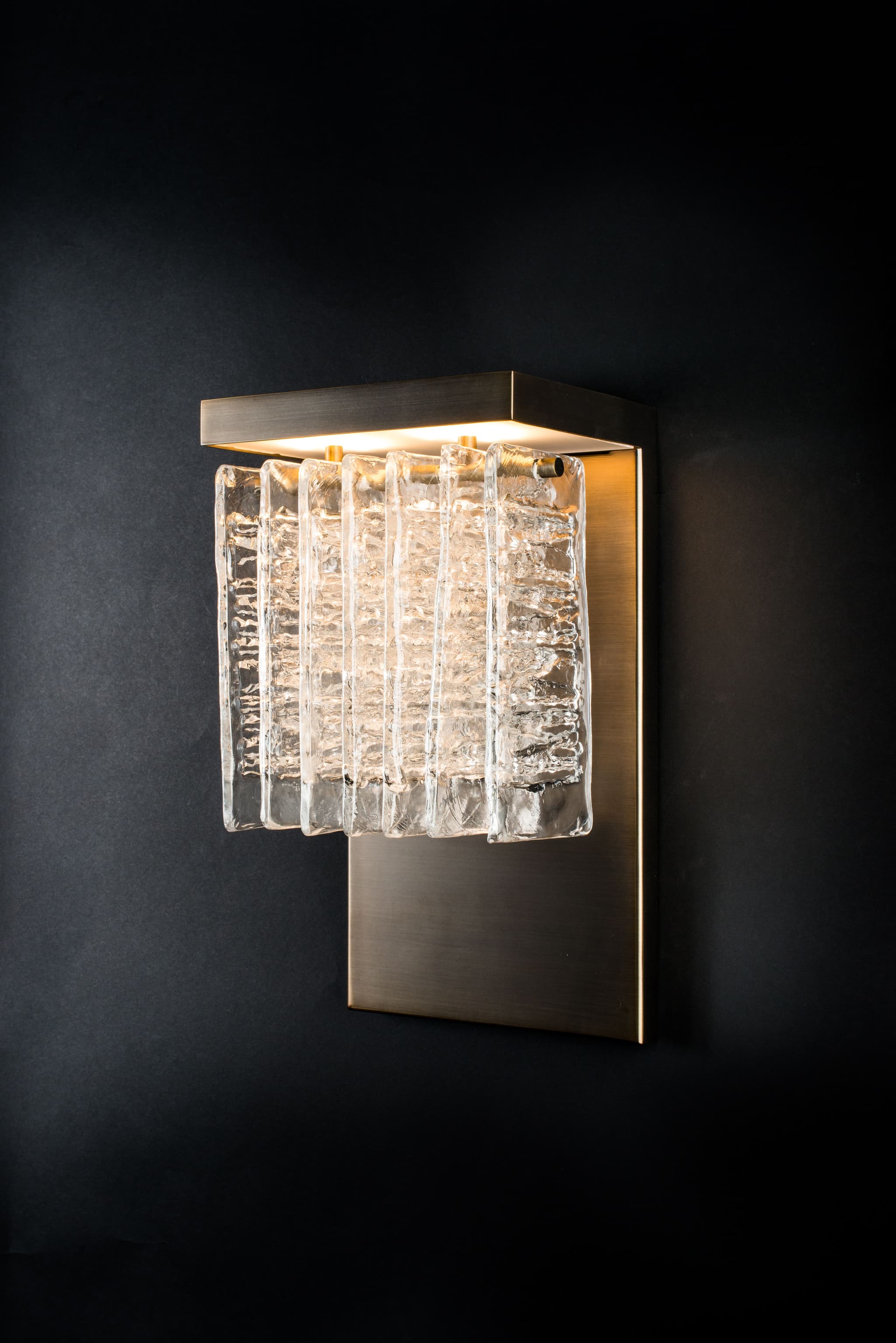
What are the key elements and processes involved in achieving the hammered bronze legs and shagreen-sheathed top of the Edha writing desk?
Again, I play with the contrasts of the materials to enhance the understanding or perception of the design. One can clearly identify the elements that make up the desk: the top is 100% shagreen, while the legs, with the recessed joint in between, serve as the supporting elements in bronze. Each element is distinctly recognisable.
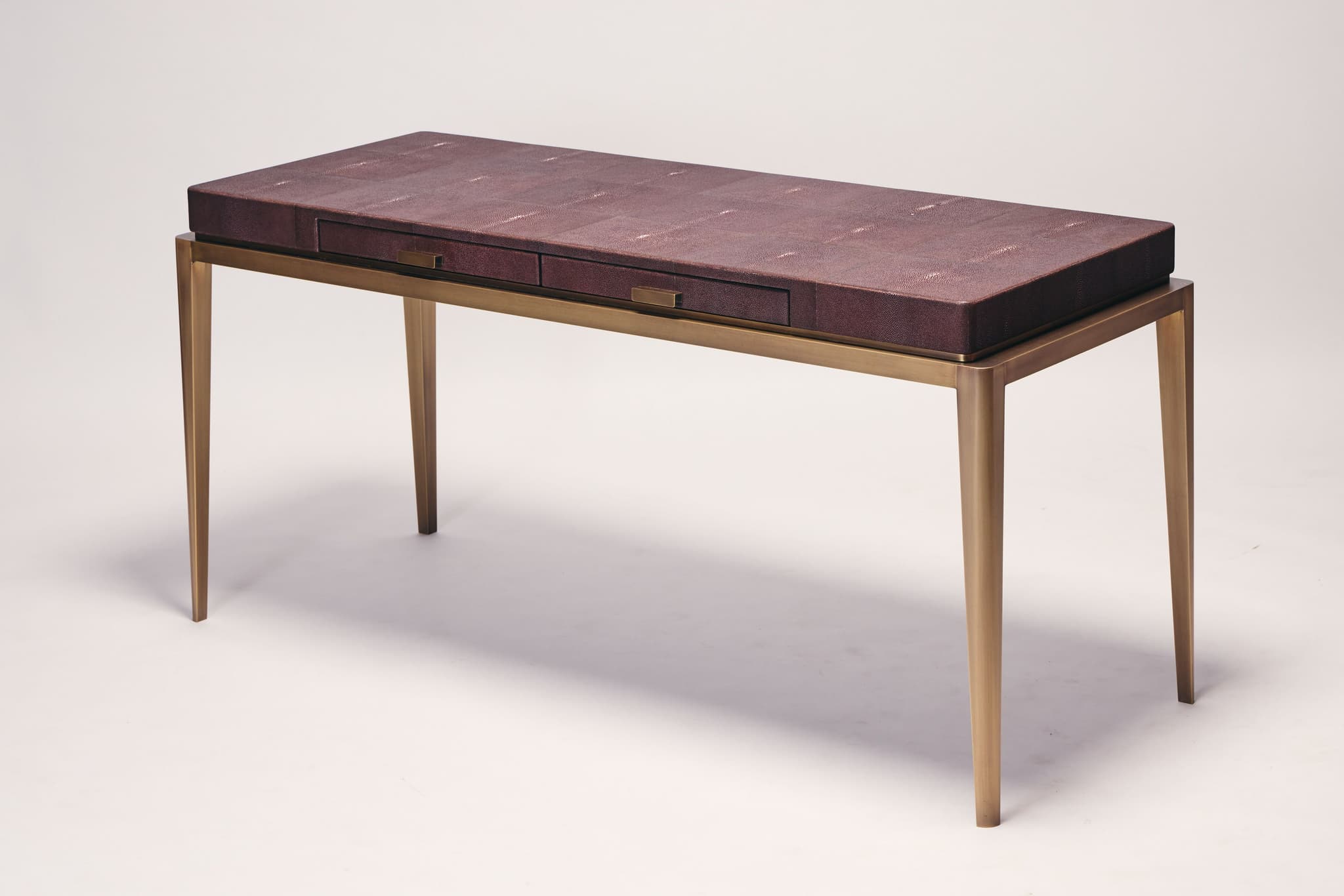
How do you achieve the delicate balance between the heavy eggshell top and the thin bronze legs in the Jaya console?
In this case, I also work on the proportions. I exaggerate the lines and purposely make the object ‘top-heavy’ to make the eggshell stand out. The beauty of this material is very subtle, as the pattern is never repeated. So, when it is used on a large surface, it becomes incredibly rich. Each square centimetre is unique, which gives the console its qualities and beauty.

Can you elaborate on the specific laser-cutting and shaping techniques used in crafting your intricate bronze and metal pieces?
Bronze and brass are naturally beautiful materials — deep, rich, strong, and subtle. I use the precision they offer to its full extent.
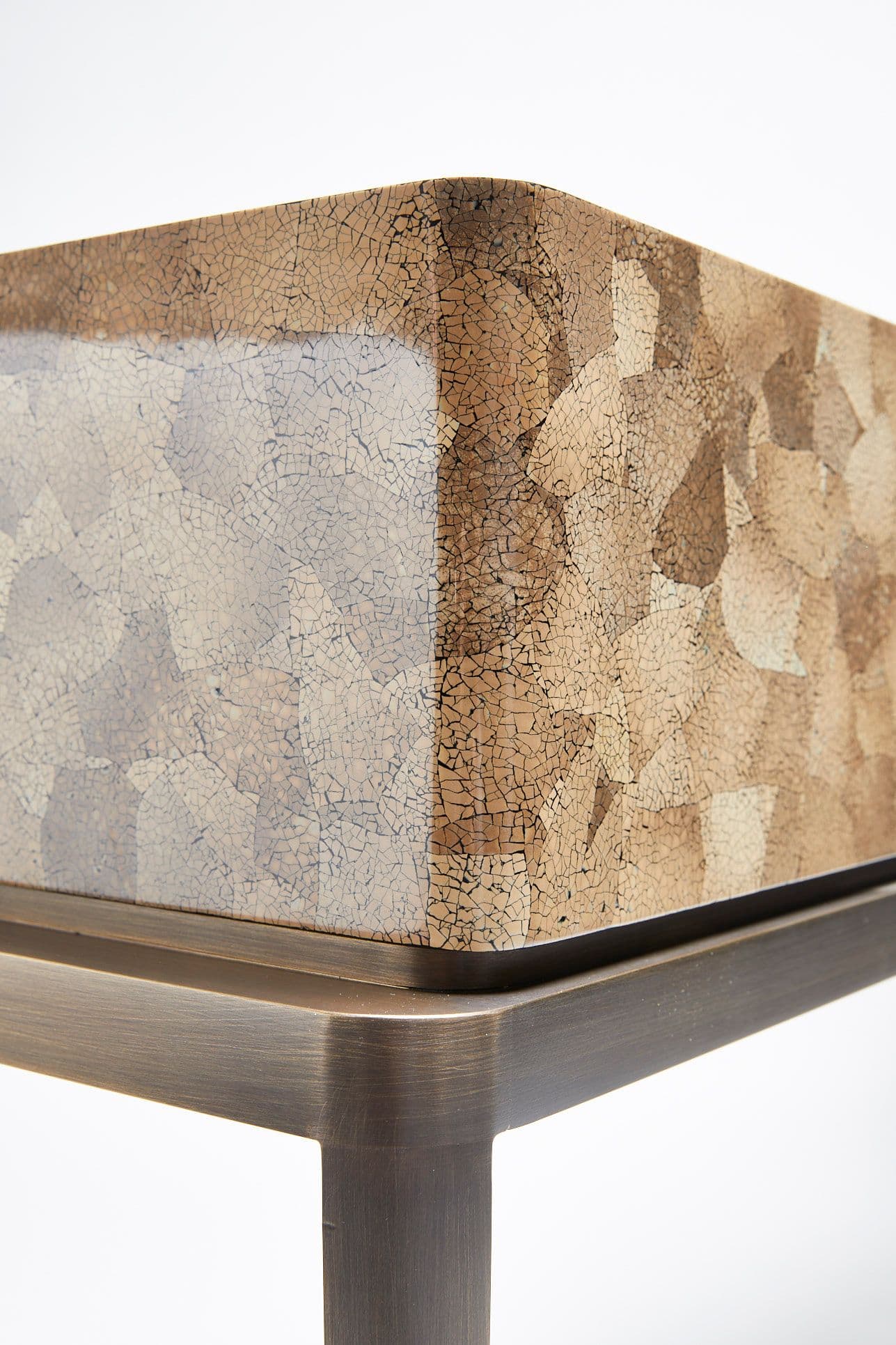
What are the environmental considerations and sustainability practices you follow when working with exotic woods and natural materials?
For our pieces, we use only FSC-certified woods. I work with many handcrafted artisans around the world, each employing their own techniques. All of them are now moving towards a better understanding of materials in terms of sourcing, usage, and waste recycling.

How do you plan to continue pushing the boundaries of art and design, and what new directions are you exploring?
It is always fascinating to see that designing is an endless process. When you finish one piece, you learn from it, and this knowledge feeds into the next piece. It is called experience, but we should refer to it as ‘understanding’ or ‘knowledge’ that guides you. It allows you to push your own work further by questioning yourself: ‘If it worked (or failed) the last time I tried this, then maybe next time I can push it further?’ It is all about questions and never thinking you have the final answer.
